Read more of this story at Slashdot.
Ronald.phillips
Shared posts
Toyota Japan Exposed Data on Millions of Vehicles For a Decade
Van's Cruel Twist Of Fate In Yellowjackets Season 2 Episode 7
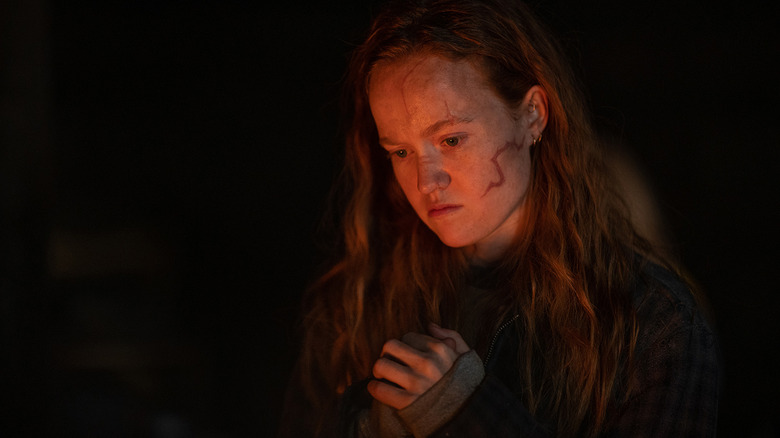
This article contains spoilers for "Yellowjackets" season 2.
"I can't wait for you, Tai. Literally, I don't have that kind of time ... I have cancer."
This is the first thing Van tells Taissa after the duo kisses for the first time in decades. Despite Taissa being married with a family, this is a kiss that "Yellowjackets" fans have been dying to see from the moment it was announced that Lauren Ambrose had been cast as adult Van. Her adulthood served as evidence that the teenage goalie played by Liv Hewson, whom so many fans had fallen in love with, was going to make it out of the woods alive.
However, much like the reveal that Shauna's baby was not a victim of cannibalism because it was stillborn, the discovery that Van is diagnosed with terminal cancer as an adult is almost harder to process than had she been sacrificed to Lottie's tree gods. It's a reflection of the cruel randomness of life. Yet again, "Yellowjackets" serves as a reminder that terrible things happen all the time, plane crashes or not.
I spent a long time trying to figure out how to open up this article. During my recaps, I've spent the last two seasons joking about how I talk about the show — Van specifically — with my therapist, and this episode is absolutely on the docket for this week's session. But how do I begin? Do I paint a cute portrait of exposition and hide the reveal after an ad break or do I beat around the bush to make the announcement more palatable? Ultimately, I decided to rip off the Band-Aid and get it over with at the start, because that's how cancer diagnoses typically happen in real life.
I should know, I've gotten one.
'This Isn't One Of Those Times'
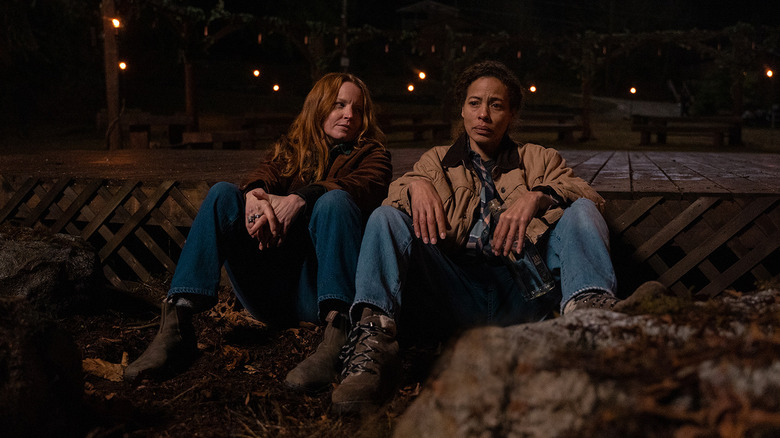
Understandably, Taissa doesn't know how to process to news that the first love of her life is dying. "You know when someone says they have cancer but they say, 'but it's the best kind of cancer to have' or 'but they caught it really early?' This isn't one of those times," Van tells her. When Taissa found a bottle of prescription-strength painkillers in Van's medicine cabinet, Van throws them out, claiming they were her mother's before she died of cancer. Later, she takes them out of the garbage. I should have known that Van was lying, not about taking the pills, but about the cancer.
I hid my pills too when I didn't want people to know I was still sick.
Taissa's eyes are filled with tears as she tries to accept this information, but Van is very much content with her reality. "See, I didn't want to have to see this face," she says before commanding Tai "act normal" before they spend time with the rest of the group on Lottie's compound. I imagine the scene is a gut punch to those watching at home.
It certainly was for me, but it was less about Van having cancer and more about watching her be so very comfortable with it. Van has accepted, processed, and some could even say embraced her inevitability. She's had time to sit with it. For Taissa, this is new and painful, but I also don't blame Van for a second for not wanting to waste the little time she has holding someone's hand while they figure out how to deal with what is happening to her.
Again, I should know. I've been there.
'I Just Think It's Time We Woke Up'
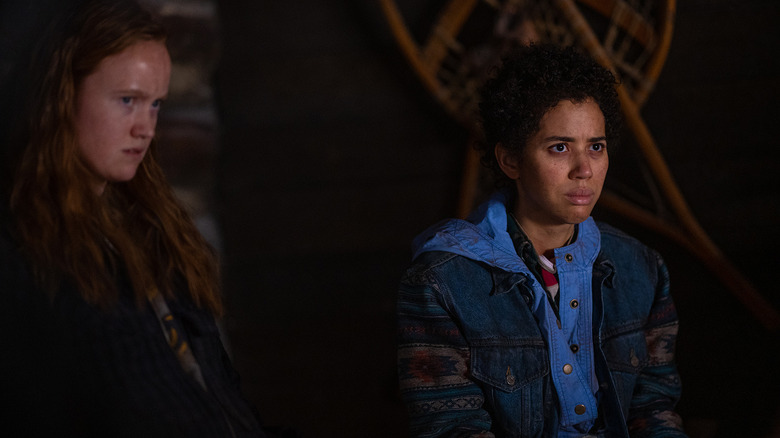
One of the things I've always loved about Van, and something about her that I see in myself, is how unafraid she is to be realistic. In the 1996 timeline, she and Taissa try to recover from the traumatic experience of witnessing their friend deliver a stillbirth. Taissa is full of sniffles and tears, while Van is extremely even-keeled about the whole ordeal. It's not that she doesn't care, she does, but it's obvious that she hadn't been clinging to optimism the way Taissa and some of the others had been.
"I really thought he was gonna make it," Taissa says. Van, who was originally the one putting her faith in Lottie's possible supernatural powers, is done kidding herself. She points out that even if the baby survived, Shauna is still starving. He likely wouldn't have made it very long without any nourishment, or medical attention, and in harsh weather conditions. Taissa is thrown off by Van's arguable pessimism, even saying, "That doesn't sound like you." It may not sound like her, but it is her.
"I kept surviving all this s*** that should've killed me and, you know, I figured that it meant something. You know? Like, maybe it meant that I had some kind of purpose in all of this, but, yeah, I'm not f***ing seeing it, Tai."
Look, I'm no therapist, but I've said almost that exact statement to my wife on multiple occasions. Laura Lee is dead. Jackie is dead. Shauna's baby is dead. And Van, despite having been mauled by a wolf, is somehow still alive. If I had to guess, it sounds like Van has a wicked case of survivor's guilt, something that she's clearly carried with her post-recovery mission and now into her terminal diagnosis.
I have it too, and let me tell you, it sucks.
No Return, No Reason
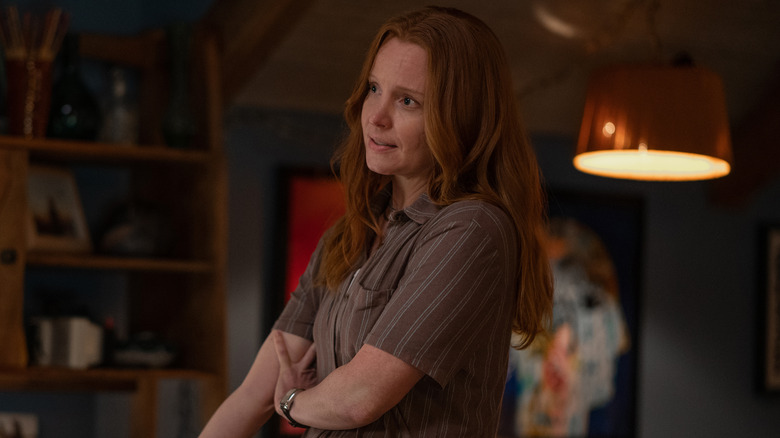
I was diagnosed with pancreatic cancer at the age of 23. I was told there was a 12 percent chance I'd make it to 25 and a 5 percent chance that I'd make it to 28. I'll be 33 at the end of the month. If I had any idea how or why I've made it this far, I'd tell you, but the reality is that it just happened. We like to think that cancer plays favorites, only attacking those with genetic predispositions or people who have made bad decisions with how they treat their bodies, but that simply isn't true. We can predict, sure, but ultimately, cancer doesn't follow reason.
I've never been in a plane crash where my friends died and I felt guilty about surviving, but one of my best friends was diagnosed with cancer shortly after I was. I'll spare you the details, but I've spent more time wondering "why her and not me" than is healthy. And despite this so-called "new lease on life," I am still plagued with the depression, anxiety, and mental illness I had before I got sick. If anything, it's only gotten worse, exacerbated by the survivor's guilt I feel every day I'm not out here "living life to the fullest" knowing that one of my best friends is split between multiple urns. The thing no one tells you when you face death and win is that the metaphorical gold medal sits on your chest like a cinder block as a constant reminder of how close you came to dying.
Knowing what I know now about Van, I can see her carrying that weight, too. I can't believe I missed it the first time around ... or maybe I just didn't want to return to that reality for myself.
Never Count Out The Goalie
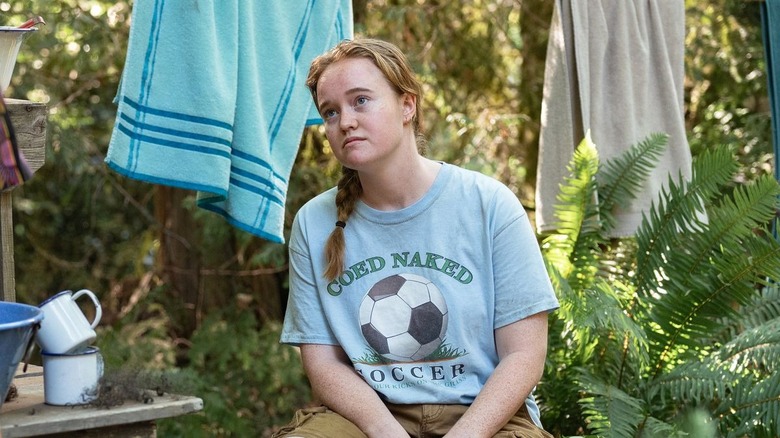
Van reminds me a lot of my teenage self; a smartass queer girl who can conduct entire conversations in movie quotes and has a sarcastic comment for every situation. So it's difficult for me not to hope that Van's fate aligns with mine and that she somehow defies the odds and cheats death once again.
Van is also the goalie on the Yellowjackets soccer team, which speaks immensely to her character. Her job isn't to chase down the ball or play defense — her job is to stop whatever comes her way and block the opposition from scoring. But, as any athlete will tell you, a goaltender is only as good as their defensive line, and that's where Taissa comes in.
In 1996, Taissa tells Van that she'd be dead without her. Van replies, "I need you too, but I need to know why the f*** I'm still here." I hate to break it to Van, but she's probably never going to know the answer. But what I can say is that the best way to make it through this unfair, often rigged game we call life is to remember that it's a hell of a lot more manageable when we allow the center midfielders in our life to help carry the burden.
Series creators Ashley Lyle and Bart Nickerson admitted during the "Yellowjackets" panel at PaleyFest that Van was originally supposed to meet a tragic death in the wilderness during season 1, but that the writers' room thought it would be more interesting (and funnier) if she was constantly making it out alive. If wolves, blizzards, starvation, and potential ritualistic sacrifice couldn't take her out, I highly doubt a punk-ass b**** like cancer is going to get to do the honor.
But if it does, it does. And I'll talk about that in therapy too.
Read this next: Shows To Watch If You Miss Yellowjackets
The post Van's Cruel Twist of Fate in Yellowjackets Season 2 Episode 7 appeared first on /Film.
Leak of MSI UEFI Signing Keys Stokes Fears of 'Doomsday' Supply Chain Attack
Read more of this story at Slashdot.
Senators Push Overhaul of Classification Rules After Trump, Biden Cases
Senators introduce bill to reform security classification system in the US to prevent mishandling of classified information and promote better use of intelligence.
The post Senators Push Overhaul of Classification Rules After Trump, Biden Cases appeared first on SecurityWeek.
The Legend of Zelda: Tears of the Kingdom review: A familiar but fresh adventure
Games like The Legend of Zelda: Breath of the Wild don’t come along often. The 2017 title came 31 years into the franchise’s history and somehow felt familiar while simultaneously remixing or entirely removing core tenets of the series. To put it mildly, the changes worked. Breath of the Wild is the biggest-selling Zelda game of all time and was an unqualified success with critics and players alike.
What in the world do you do for an encore?
Internally, Nintendo decided to get right on that, announcing a direct sequel was in development only two years after Breath of the Wild arrived. The result is The Legend of Zelda: Tears of the Kingdom, a game that is not a complete reinvention. Instead, after successfully blowing up the Zelda format, Nintendo is giving players even more – more of Hyrule to explore, and more freedom to dream up how to tackle the many, many challenges the game throws at them.
Perhaps even more than its predecessor, though, Tears of the Kingdom demands patience. There’s an overwhelming amount of things to do, locations to see, puzzles to solve and enemies to defeat here. And as I tried to play through it as quickly as possible, to see as much of the world as I could for this review, I ended up more frustrated than satisfied. Fortunately, I then decided to slow down and indulge my curiosity, a decision that made the game far more rewarding and made me eager to explore at my own pace, without worrying about getting to the end.
Tears of the Kingdom kicks things off in a fashion that’ll be familiar to anyone who played Breath of the Wild. A quick prologue reveals the dark wizard Ganondorf and a calamity known as the Upheaval – events that leave Link grievously injured and Zelda missing (stop me if you’ve heard this one). The twist comes when Link awakes in a sky kingdom populated by ancient and powerful technology, courtesy of the Zonai clan. Lest you think, like me, that Nintendo just invented a new mysterious culture with a new set of powers to replace the Guardians from Breath of the Wild, the Zonai were actually briefly mentioned in the previous game.
The first few hours of the game take place entirely in the sky, a fascinating setting with a host of new challenges and enemies. But here the game retreads the prior entry here as you need to journey to a handful of shrines to get a new set of abilities, just like you did on the Hyrule plateau in Breath of the Wild. Once that’s done, you’re able to descend to Hyrule proper and get exploring.
Tears of the Kingdom gently guides you towards a few locations to get you started – but you can go anywhere you want, if you’re intrepid enough to try. The game definitely doesn’t hold your hand, and it took me a surprisingly long time to get my bearings and feel confident against the many monsters you’ll come across. At the start, Link is woefully underpowered, which makes finding the dozens of shrines dotting Hyrule crucial, as this is the quickest way to get more hearts, stamina and learn new fighting techniques.
I was also eager to find the numerous towers that dot the land, as those are how you reveal more of the Hyrule map. Six years later, Hyrule still feels positively massive, and navigating it without filling in the map is an exercise in frustration. In retrospect, though, I probably was too aggressive about journeying beyond the first few areas the game reveals to you, as I ran into numerous enemies I was simply not powerful enough to take on. My advice: stick to the game’s script and focus on the first few quests it gives you before going into full explorer mode.
In addition to the many shrines, the game will quickly implore you to search out four regions of Hyrule to investigate disturbances affecting the areas. (If you played Breath of the Wild, you can surely guess where those areas are.) This is where you’ll find the game’s four areas that harken back to the dungeons in Zelda games of yore. Just like before, you’ll need to help the citizens of each region before you can advance – but to keep things fresh, all the big dungeons are in the sky.
As much as I enjoyed revisiting the vast Hyrule overworld, the different gameplay elements and scenery of the sky areas made this feel novel. These main dungeons feel more similar to the Divine Beasts from Breath of the Wild than the levels found in Zelda games of old, but this time out they’re more visually distinct and connected to the region of Hyrule you’re visiting. The bosses of each are also a lot more creative and interesting than the variations of Calamity Ganon from last time out, too.
Another thing that will be familiar to Breath of the Wild players is the game’s presentation. As a direct sequel, there’s no noticeable change to how Hyrule and its inhabitants are rendered this time. Obviously, the sky islands and underground caverns were not present in BotW, so those areas gave the designers a chance to come up with impressive new visuals. The sky areas were particularly striking to me, though the underworld has a creepy, alien atmosphere that adds a whole new vibe to the game.
Nintendo’s art direction is impeccable, as usual, but six years on from Breath of the Wild it’s fair to say I sometimes wanted a bit more. I’ve been playing the Horizon Forbidden West expansion Burning Shores – that series has a similarly vast open world to these recent Zelda games, and having that in the back of my mind made me imagine what Hyrule could look like on more powerful hardware. I’m not saying I want a fully photorealistic Zelda game; the semi-cartoonish style has always been part of the charm. But it’s hard not to imagine just how spectacular this game could look on more powerful hardware. Of course, that’s not Nintendo’s strategy and it hasn’t been for years – but one can dream.
That said, the Switch hardware does show its age in one significant area. Frame rate drops are a bit more common in Tears of the Kingdom than I’d like. To be clear, this isn’t a major issue that renders the game unplayable by any stretch of the imagination. Generally, things run solidly at 30 fps, but the more advanced physics at play here occasionally causes some stutters. You’ll also get some dropped frames if too much is happening on screen, like big battles with multiple enemies in the rain. I never felt like these problems were enough to keep me from playing, but they are noticeable and show that Nintendo is pushing the Switch as hard as it can here.
You may be wondering what makes Tears of the Kingdom more than just a Breath of the Wild remix. There are two major components that make it stand out. First are the two new areas above and below Hyrule proper. Both the sky islands and underworld add completely new challenges and gameplay elements. For example, one set of sky islands has less gravity than everywhere else in the game, so jumps carry you further. It may sound like a little thing, but it actually changes the way you go about fighting enemies – for example, a jumping slash attack can deliver multiple blows as you slowly float back to the ground. But it also leaves you more vulnerable, since you can’t pull out your shield in the middle of this move. If you time it wrong, you can take serious damage in a counter-attack.
The underworld areas are perhaps the most treacherous you can visit in Hyrule. That’s thanks to the persistent gloom enveloping those regions, something that makes the monsters below even more powerful. If you get hit, not only do you lose hearts from your health bar, but those hearts actually “break” – they can’t be refilled unless you use a special elixir or visit particular waypoints scattered throughout the map. Naturally, since it’s pitch-black underground, navigating is a challenge as well. You’ll want to come well-stocked with brightbloom seeds, which can be found in caves throughout Hyrule. Dropping those illuminates the area, and you can also take special potions that make you glow on your own.
The underworld quest line provides a second set of tasks beyond the ones found in the Hyrule overworld. There aren’t any dungeons underground as there are up in the sky, but there are still significant quests and enemies to find below the surface. And from what I’ve played so far, these aren’t just side quests – they intersect with the main goal of finding Zelda. It’s easy to forget about the underworld while journeying through Hyrule proper, looking for shrines and helping residents in all corners of the map, but you’ll gain valuable skills and progress the story in major ways by diving underground as well. If you’re getting stuck or running out of steam, delving into the deeps is a good way to change things up.
But easily the most significant change is in the abilities Link has, thanks to his “Purah Pad” (a new name for the Sheikah Slate from BofW). Two of the abilities, Ascend and Recall, are useful but don’t fundamentally change the way the game is played. Ascend lets you dive straight upwards through roofs or rocks to reach new areas quickly, while Recall rewinds time on specific objects to move them backwards. They can be handy for sure, but you’ll need to master the other two powers to get anywhere in Tears of the Kingdom. One is called “Fuse,” which lets you stick objects you find around the world onto your weapons or arrows to enhance them. This is a requirement, because most of the weapons you find in the world have been decayed by Ganondorf’s emergence.
The good news is that you can stick all the monster parts you find around the world onto these weapons to greatly increase their power. For example, you can stick bokoblin horns on to your swords to make them stronger, but you can also fuse the tail of an ice lizard to a weapon and get its freezing power. However, these weapons still break far too often, so you’ll constantly want to be stocking up your inventory and investigating what combos of weapons and additional items work best. This goes for arrows, too: instead of being able to find or buy fire arrows, for example, you’ll need to attach a fire fruit to your arrow to set things aflame.
And then there’s Ultrahand. This takes the Magensis power from BotW, which let you move metallic objects around, and supercharges it. Now, you can pick up almost anything you see – and you can stick objects together to build basically anything you want. What really makes your creations useful are the Zonai tools you’ll find around the world, things like fans, wheels, flame-emitting objects and much more. If you have a board and a fan, you can fashion a makeshift hovercraft, for example. Or if you need to reach a far-off location, try building a bridge.
As the game goes on, it does a great job of nudging you towards building more complex and useful tools. The possibilities are near-limitless, and I’m really looking forward to seeing videos of all the ridiculous things that people try to build. (For example, the hilariously flammable war cart that my colleague Sam Rutherford built.) I was initially worried that I wouldn’t be quite creative enough to fully take advantage of the potential that Ultrahand provides, but totally wild creations are rarely required. Usually, it’s a matter of sticking two or three things together to achieve a goal, and the game makes it pretty clear what you need to do. The quick shrines, most of which you can get through in five or 10 minutes, also are good at showing you what kinds of things are useful to combine.
You can also use Fuse to combine Zonai objects together with your weapons and shields. One of my favorite combos is sticking a springboard to a shield – so when enemies hit it, they go flying, giving you a chance to counter-attack or run away. Attaching a fire device to your weapon, meanwhile, lets it spew flames as you swing it. Again, the possibilities are vast, and it’s going to be a lot of fun seeing what kinds of weapons and other contraptions people come up with to suit their own play styles.
This all adds up to a game that, despite significant shared DNA with Breath of the Wild, feels new and vital. I have fond memories of my time traversing Hyrule in BotW, and I was eager to jump back into the world again. The overworld map may be the same, but plenty of the locations have changed significantly, which provided a distinct feeling of time passing between the games as well as offering new puzzles and challenges. The frequent dips into the sky or underworld, meanwhile, provide plenty of fresh, all-new areas to explore and challenges to overcome.
All this said, I also would be remiss if I didn’t mention the difficult, sometimes unforgiving challenge this game can occasionally present. Since there’s minimal guidance as to where you can and should go, it’s easy to find yourself in enemy encounters where you’re totally overmatched. And while most of the shrines are well done, there are some that are absurdly difficult for no apparent reason.
My “favorite" so far is one where you lose all your items and armor and have to figure out how to defeat enemies with just the tools provided to you. In this case, there were about eight high-powered machines, and while there were some little war machines to create, there’s also no shield in the shrine. Even with 10 hearts, making two mistakes was enough that I would die and lose my progress. It was incredibly frustrating, and there was no reason for it to be so hard.
And the impact of Fuse and Ultrahand cannot be overstated. These new tools make experimentation a hallmark of Tears of the Kingdom in a way it hasn’t been before. Now, in addition to exploring every corner of Hyrule, you’ll also need to try lots of different combinations of tools, weapons, found objects and Zonai devices to find the solution a puzzle demands. Or you can fritter away hours making contraptions from whatever you find laying around. In a lot of ways, Breath of the Wild was already a creative sandbox that let gamers tackle the various adventures it offered in any order and any fashion they chose. In Tears of the Kingdom, that’s even more true.
If you want to spend all your time spelunking in the underworld, feel free. If you’d rather hunt down shrines at the expense of all else to maximize your stamina and hearts, that works too. If you only want to engage in building objects with Ultrahand when the game requires it, that’s fine – it makes it clear when you need to build various contraptions to advance. There’s enough guidance to set you on your path when you get started, but you can also ignore that and just roam the wilds. Do so at your own risk, though – it’s rough out there.
Tears of the Kingdom isn’t the series reinvention that we got in 2017, but that’s OK. There’s more than enough here to justify revisiting the Hyrule that we first saw with Breath of the Wild — I've "only" put in about 35 hours at this point, and there's no end in sight to my journey. If you’re one of the millions who delighted in that game’s freedom, chances are you’ll love Tears of the Kingdom too.
This article originally appeared on Engadget at https://www.engadget.com/the-legend-of-zelda-tears-of-the-kingdom-review-a-familiar-but-fresh-adventure-120035307.html?src=rssReview: The Legend of Zelda: Tears of the Kingdom
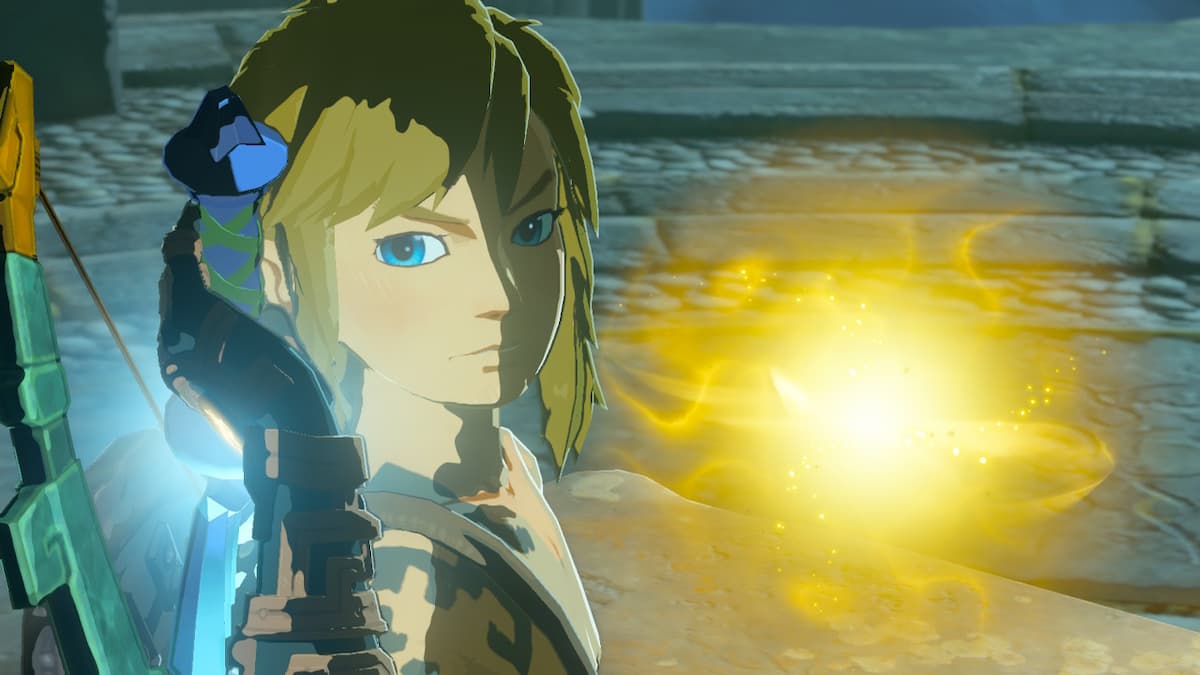
Tears of joy or sadness? You decide
It didn't take long for Zelda: Tears of the Kingdom to kick into overdrive. That's sort of its modus operandi: it partially assumes you've played Breath of the Wild, and already know some of this particular timeline's shtick and gameplay.
That's a good thing for Tears; given how all of the improvements clean up a lot of the mechanics from its predecessor while adding a whole new layer of creativity.
The Legend of Zelda: Tears of the Kingdom (Switch)
Developer: Nintendo
Publisher: Nintendo
Release: May 12, 2023
MSRP: $69.99
[caption id="attachment_377848" align="alignnone" width="640"] Screenshot by Destructoid.[/caption]
Screenshot by Destructoid.[/caption]
This is one of the best Zelda worlds to date
Having played every game in the series, I've witnessed every different take on Zelda: from the sprawling to the more intimate. What Tears of the Kingdom really has going for it is variety. In addition to all of Hyrule at ground level, you also have a sky region (which doesn't take up nearly as much space as Hyrule itself but is peppered throughout the map with some larger areas to explore), as well as underground.
I'm letting you know upfront that I'm a sucker for floating islands. But to say I felt overwhelmed at any given time playing through Tears of the Kingdom is an understatement. Rocks can fall from the sky, allowing you to "rewind" them back upward to explore more aerial ruins, and there are holes in the ground to drop into the aforementioned chasm. While exploring Hyrule I was often presented with multiple paths to discover, rather than aimlessly (and slowly) walking through just Hyrule itself.
The world has sort of entered a "WoW Cataclysm"-like state, in that it's similar, but reinvented (as a result of being messed up by another cataclysmic event). Some towns that existed in Breath of the Wild were reduced to ruins, and some new establishments have popped up. Key locations have been shifted around a bit, new areas are in, and many old areas are remixed to the point where they feel different. Then you have the entire sky map and the underground zone.
The addition of two whole new areas should alleviate a lot of the complaints that Breath of the Wild's world is "boring," but the real magic sauce is that Nintendo completely changed up how you interact with the game world.
[caption id="attachment_377849" align="alignnone" width="640"] Screenshot by Destructoid.[/caption]
Screenshot by Destructoid.[/caption]
Durability matters less, but it's still in
Here are the big new powers that Link has at his disposal following the tutorial:
- Ascend: Rise upward into solid ground and come out the top
- Ultrahand: Manipulate objects (similar to stasis but much more interactive, and you can stick things together like glue or tinker toys)
- Fusion: Combine items to create new arrows, craft new weapons, or bolster existing ones
- Capsules: Think of them like "inventions," like fire hydrants that spout water, or dragon heads that operate like flamethrowers
Recall is also in (which lets you rewind objects), but Ultrahand is true rocket fuel for the creative fire. To be blunt, I was blown away at how many opportunities there were to create your own tools, vehicles, bridges, and more. When you combine the ability to glue together objects like you were playing World of Goo alongside the collective new kit of Link in Tears of the Kingdom, he's a force to be reckoned with even with just the three hearts he starts with. On the flip side of failure, I had many, many Home Alone 2 "like a rock, huh Marv" moments when I spent 15 or more minutes creating a contraption (like stairs or a bridge) to try and get to a new location: only to slowly watch in horror as it rolled down a mountain or sank into an abyss. It was a blast.
Fusion helps cut down on some of the frustration many fans had regarding weapon durability, but it doesn't solve the situation outright. Remembering to fuse things constantly can be annoying, and there is a trial and error aspect in terms of trying to find "optimal" results. Sometimes fusing items into a combo you think will turn out great just allows a wet paper towel item to morph into a slightly less damp paper towel, which isn't a good feeling. The best news is that if you didn't really mind durability in the original (that's me), you'll feel right at home here. If you hated it, it's a little less feel-bad depending on how you get on with Fusion.
Without spoiling all of the new unlocks, combat is much more dynamic with Fusion-based shenanigans and capsule toys. Elemental attacks are at the forefront of Tears of the Kingdom's fighting system, and there are more opportunities to mix and match playstyles due to Fusing items into arrows and weapons. I ended up using my bow roughly twice as much in Tears of the Kingdom as I did in Breath of the Wild, which added a lot more depth to combat beyond the typical "block/dodge/flurry" system of the latter.
[caption id="attachment_377850" align="alignnone" width="640"] Screenshot by Destructoid.[/caption]
Screenshot by Destructoid.[/caption]
So are there dungeons or what?
They're called "temples," but they're basically framed like Divine Beasts. After entering them (following a questline to actually discover them), you'll be tasked with unlocking four~ locks: attached to a door that houses the final boss.
I can hear the yawns now, but the temples are a step up from the Divine Beasts solely because of how many puzzle solutions are available with the new powers and inherent game mechanics. The sequence-breaking options alone are sick: if you put 10 people in a room and make them solve any given dungeon, everyone would do at least one lock or puzzle differently. Ascend and Ultrahand are the big fun culprits, and the Divine Beast "do any of the locks in order" sequencing works far better now that there are more ways to approach each individual problem.
I had a very similar experience with finishing shrines, which return in Tears of the Kingdom and are similarly linear. Shrines as a whole are a lot more dynamic as a result, and I've encountered far less frustrating puzzles compared to Breath of the Wild. The designs, in general, are looser, which not only helps get your creative juices flowing; they're also less obtuse, and more fun.
Again, I cannot stress this enough: the powers in Tears of the Kingdom are indeed empowering. Instead of slowly climbing up a tower, you can Ascend. If there's no land mass to Ascend to, you can typically build a bridge or a way to help cut down on a taxing climb.
[caption id="attachment_377853" align="alignnone" width="640"] Screenshot by Destructoid.[/caption]
Screenshot by Destructoid.[/caption]
The story is still in the background, and your narrative mileage may vary
The framework of the game's main story is going to be one of the bigger sticking points as we move into the Tears of the Kingdom discourse. The faster setup helps a lot, as a lot of the pageantry of the world is not needed given the nature of Tears' existence as a sequel.
But a lot of the narrative is still told through flashbacks (which are part of another Zelda-linked sidequest chain), and the structure itself is also similar to how Breath of the Wild's story plays out. That said, it does kick off very quickly, in the way a direct sequel should, and it does ramp up to deliver an array of lore-heavy material. There's some tutorializing here (especially when it comes to the new powers), but there's a lot more urgency with the story upfront, and a little more intrigue when it comes to two major facets: the lore, and Zelda herself.
We learn about the ancient Zonai civilization, prior wars with the dark forces of Hyrule, and how Link and Zelda fit into all of it. There's very little I can say about the story without going into spoiler territory, but suffice it to say I did enjoy the narrative a bit more this time around: even if some of its beats are humming along a little too quickly or are out of the way.
[caption id="attachment_377851" align="alignnone" width="640"] Screenshot by Destructoid.[/caption]
Screenshot by Destructoid.[/caption]
It's Breath of the Wild plussed up, which is going to do different things for different people
Depending on your perspective, some of the features present in Tears of the Kingdom are either a comfy return home or caveats. It's very similar to Breath of the Wild not only in structure, but in terms of core mechanics. Although "Zelda games are the same" is a criticism that's been levied at the series since its "teenage years" so to speak, some fans see that as a boon, not a burden.
Me? I loved nearly every minute of Tears of the Kingdom. From zooming up into the sky to spelunking in the depths, there's way more to explore here, and I feel like I haven't even scratched the surface outside of the main story and some key sidequests. But the real kicker that helps separate Tears from Breath of the Wild is its big swing power set. I felt like I was in control at all times, and had the ability to create my own path. For a series known for sequence-breaking that's not just a perk; it's a strong argument for why Tears of the Kingdom will be talked about for years on end, and may even top some favorite Zelda lists.
[This review is based on a retail build of the game provided by the publisher.]
The post Review: The Legend of Zelda: Tears of the Kingdom appeared first on Destructoid.
There's A Big Problem With The Zune In Guardians Of The Galaxy Vol. 3
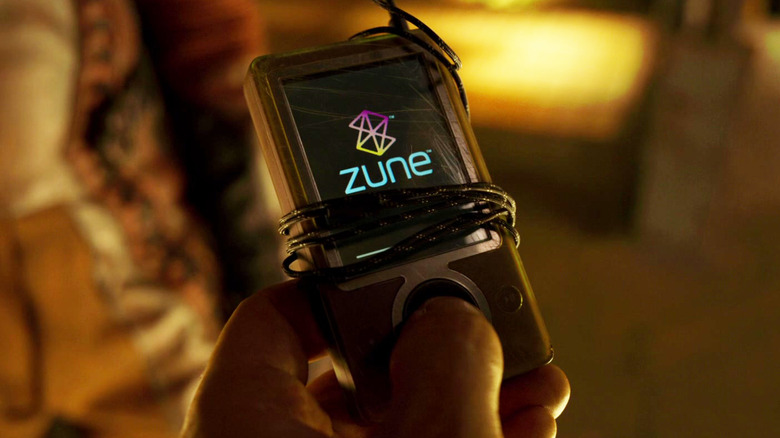
In November 2006 Microsoft introduced the Zune, a digital music player designed to compete with Apple's iPod, which already had a five-year head start in the marketplace. But I don't have to tell you that. If there's one thing history has taught us, it's that you should never underestimate the appeal of a good old-fashioned Zune. The Zune's dominance of the digital marketplace continues today, and it's a very safe bet that every single person reading this article has a Zune in their pocket right now, probably playing all the latest hit songs from Puddle of Mudd and Sugar Ray.
Yes, yes, I kid, I kid. The Zune was discontinued in 2011 after lackluster sales, and seemed destined to fade into near-total obscurity until filmmaker James Gunn resurrected it as a cheap joke in 2017 at the end of "Guardians of the Galaxy Vol. 2." After two whole feature films scored predominantly by old-fashioned audio cassette mixtapes, Peter Quill (Chris Pratt) received a new(ish) digital music device capable of holding hundreds of songs. And instead of the good one, or at least the one that sold really well which everyone remembers, he got himself a Zune.
It's a funny gag and, let's be honest, a clever way to get around giving Peter a branded device that would reek of shameless product placement, because the product that's being placed is completely defunct. And yet, while the Zune may have been a funny reveal and a subversive way to get around one of the crassest forms of cinematic commercialism, seeing the Zune in action in "Guardians of the Galaxy Vol. 3" reveals quite concretely that there's something wrong with it.
Unlike the first two mixtapes, the Zune doesn't mean anything.
Peter's Mom Is Why It's Going On
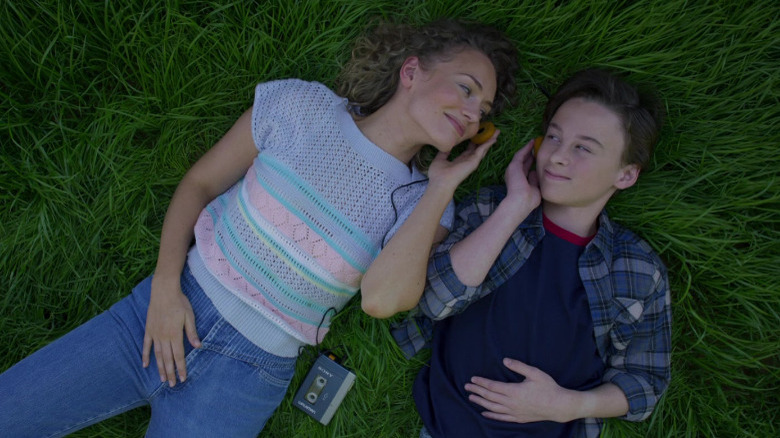
Peter Quill's first mixtape wasn't just the soundtrack to the original "Guardians of the Galaxy." Heck, it wasn't just the soul of the movie either. It was an entire character.
The mixtape, bequeathed to Peter by his dying mother Meredith (Laura Haddock) at the beginning of the movie, was full of songs with very specific messages. They were songs that she loved and wanted to share with him. They represented her passion and dreams. Songs like The Five Stairsteps' "O-o-h Child" and Norman Greenbaum's "Spirit in the Sky" aren't just blockbuster retro pop tracks ironically juxtaposed against a futuristic sci-fi backdrop, they're messages to Peter Quill from a parent who loved him, who wouldn't get to see him grow up.
Lyrics like, "Ooh child, things are gonna get easier," are recontextualized when delivered from a dying or dead mother to her young son. "When I die and they lay me to rest, I'm gonna go to the place that's the best," is very specifically, in the context of the film, a message of comfort for a grieving child.
These aren't just songs, they're love notes, and by carrying that love note with him throughout the vast reaches of space, Peter Quill is taking every single one of his incredible journeys with his mother right there with him. Every needle drop is Meredith contributing to the ensemble, right alongside Gamora, Drax, Groot, and Rocket.
Peter Can't You See That It's Just A Zune To Me
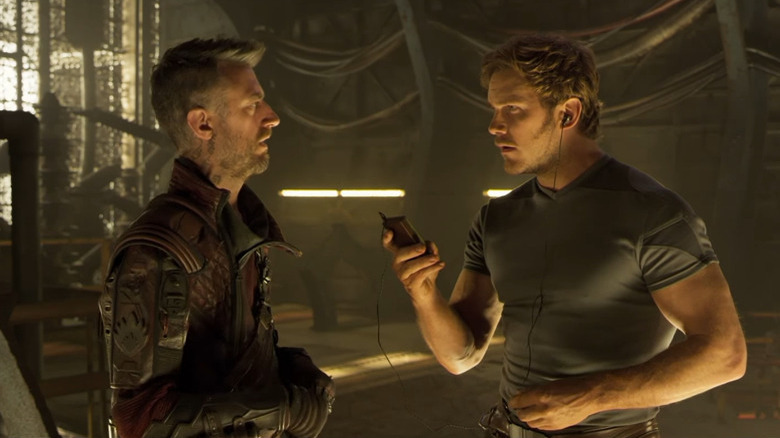
The first "Guardians of the Galaxy" movie ended with Peter receiving a second mix tape from his mother, full of more messages and deeper connections with his past. That second film continued in the tradition of keeping Meredith front and center, her songs commenting on all the action like she was right there with Peter. But when Peter's father, Ego (Kurt Russell), revealed he killed Meredith and then broke Peter's Walkman, Meredith left the picture.
It was a shocking moment in "Guardians of the Galaxy Vol. 2," and arguably quite powerful. By destroying Peter's conception of his father, and retroactively changing his knowledge of his mother's past, Peter was forced to rethink his identity and his relationships with others around him. If Peter's birth father was a monster, then that made it all the clearer that Yondu (Michael Rooker), a problematic but at the very least invested father figure who raised Peter after Meredith's death, was the person who deserved to be called his dad.
But while all these revelations may have recontextualized Peter's past, they don't change his relationship with his loving mother, whose music would no longer be present in the series after "Vol. 2." Instead, Peter gets a Zune from his friend Kraglin (Sean Gunn), containing hundreds of songs that weren't curated for Peter the way his mixtape was. They're a bunch of tunes, really, with no guarantee that any of them would be any good, and no connection whatsoever to the character the previous mixtapes represented. Or to anyone else, except the total stranger who used to own that Zune.
I Know It Might Be Wrong But This Soundtrack Needed Peter's Mom
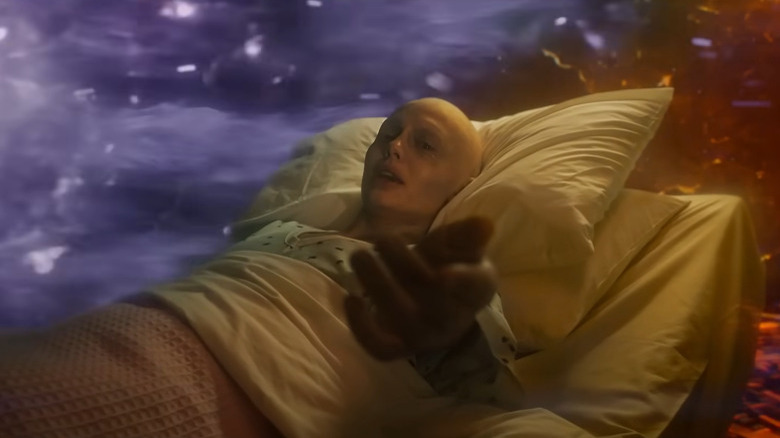
"Guardians of the Galaxy Vol. 3" tries to make a big deal out of Peter's new Zune, using it to drive the eclectic soundtrack, spark quibbles between Peter and Rocket, and educate other members of the film's vast ensemble in Earth music. (Why no other planet seems to have good music is a question left unanswered).
Of course, all these new songs mean something to the film because they're curated by James Gunn and specifically selected to underscore the film's many dramatic beats. And while it's a great soundtrack, and needle drops like "Dog Days Are Over" by Florence + The Machine might very well bring a tear to your eye (heck, it brought a tear to Florence Welch's eyes), they're missing a layer that the soundtracks from the first two "Guardians" movies boasted.
This new soundtrack is just a soundtrack. The first two soundtracks were Meredith Quill.
And I miss Meredith Quill. There was something heartbreakingly beautiful about the idea that, after someone leaves your life, you take them with them in a tangible way, and the things you loved about their life still have a meaningful impact. The "Guardians" movies were about traveling the universe with a beloved member of the family, and while Peter Quill certainly found a new sort of family, the way Gunn's new film tries to act like its soundtrack has the same impact as the other feels a bit phony.
Imagine if Rocket died and in the next film they teamed up with an anthropomorphic panda with the same personality, who was treated just like Rocket. They'd look similar but we'd know they're not the same, and I just don't care as much about a replacement as I do for a character I've grown to love.
"Guardians of the Galaxy Vol. 3" is currently in theaters.
Read this next: MCU Superpowers That Don't Quite Make Sense
The post There's a Big Problem with the Zune in Guardians of the Galaxy Vol. 3 appeared first on /Film.
How to Tell Your Frozen Food Has Gone Bad (Without Tasting It)

It’s difficult to imagine modern life without access to refrigeration. Not only does it make grocery shopping a lot easier to plan, being able to freeze our food and leftovers allows us to take advantage of bulk discounts and reduce food waste. Plus, having a freezer means you can literally enjoy a burrito whenever…
Direct3D 8 to Vulkan translator D8VK 'production-ready' 1.0 is out now
Fallout creator reveals the true purpose of the vaults
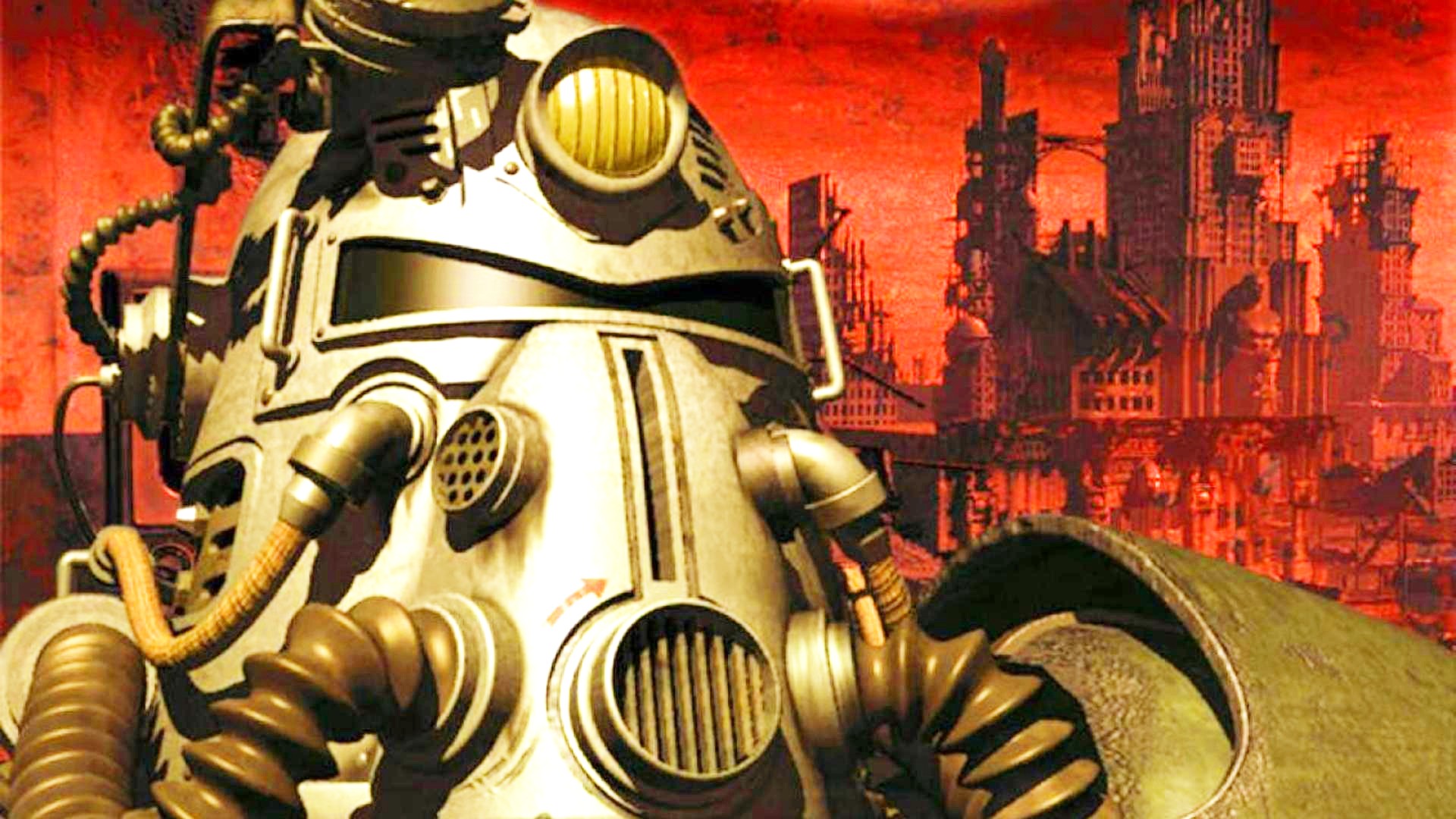
Fallout vaults are unusual. On the surface, they’re basically sophisticated bomb shelters designed to help US citizens survive the eponymous fallout of the 2077 war. But if you’ve played Fallout 3, New Vegas, or Fallout 4 - or the classic isometric RPG games from Interplay and Obsidian - you know that the vault’s creator, Vault-Tec, is up to something more sinister. Now, Tim Cain, co-creator of the original Fallout way back in 1997, shares the true, original meaning behind the vaults.
The Creator Of Cowboy Bebop Made A Netflix Anime Predicting The Dangers Of A.I. Art
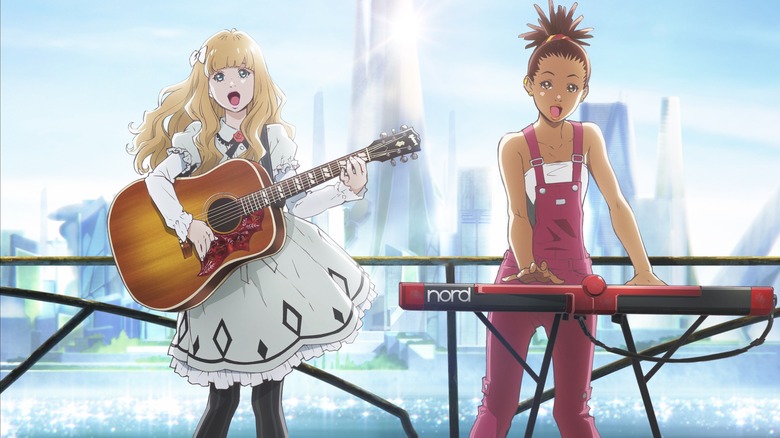
Artificial intelligence has been a sci-fi villain for about as long as the concept has existed, but in the past few months, we've seen the issue of AI become timely, present, and poignant. There is AI taking over journalism, AI being used to replicate actors' voices, and AI making a whole OASIS album. Artificial intelligence is also part of the negotiations that led to the Writers Guild of America's strike, as concerns about AI's role in the creative arts become more and more urgent.
It used to be a common belief that robots would take over technical jobs like programming, not the arts. This is a development few saw coming, but "Cowboy Bebop" creator Shinichirō Watanabe was one of those few. Back in 2019, Watanabe made a new anime in commemoration of the 20th anniversary of the famed studio, Bones ("Fullmetal Alchemist," "Mob Psycho 100," "My Hero Academia"), called "Carole & Tuesday."
The show's basic premise is that it takes place in the future after humanity has colonized Mars. We follow two young girls, one who escapes a repressed life of wealth as the daughter of a prominent politician; the other an orphan refugee from Earth. The two meet and instantly form a connection as they decide to become a singer-songwriter duo. The problem is, no one cares about original music made by people anymore, because all art is created by powerful algorithms and AI.
The Meaning Of Art
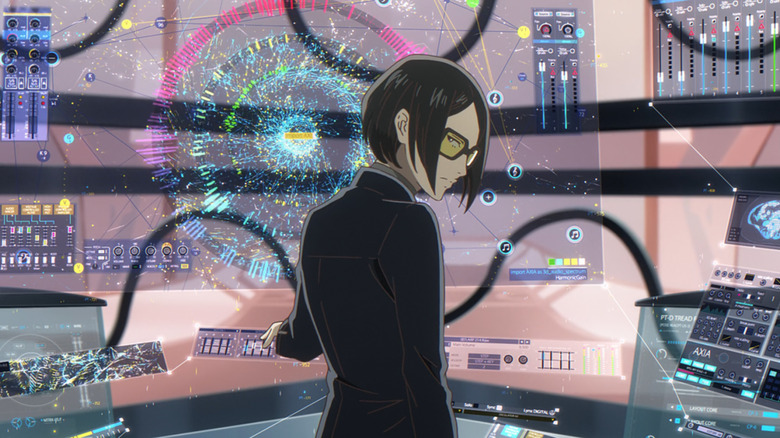
From the very first episode, we meet what is essentially the third main character, Angela, a former child actor and model who is transitioning into a career as an idol. Her mother gets her a famed manager named Tao, who uses artificial intelligence and high tech to elaborately manufacture pop stars, engineer hit songs, and craft the ideal image of stardom. At first, Tao is annoyed by Angela, as he is used to working purely with AI, while the singer serves as little more than a puppet.
AI is so prominent in the world of "Carole & Tuesday" that two girls simply jamming and singing a very rough draft of a song they came up with hours earlier is enough to blow the minds of everyone who listens. Despite what Tao and other producers say throughout the anime, there is such a thing as a human element in art. Even songs as perfectly constructed and thought out by AI as the Mermaid Sisters' entry to the singing competition, Mars' Brightest, can't hit quite as hard as the simple songs by two teenage girls.
Shinichirō Watanabe is hugely and unequivocally speaking from a place of skepticism when it comes to technology, giving us not only cold and soulless AI art, but also robots that direct music videos as a front for a scam, and a Pinocchio-looking investing advisor robot who steals crypto from rich jerks. That's not to say that technology has no place in our lives, but to lose a human touch is to lose something in ourselves. Watanabe argues that music is an equalizer — a low-budget, lo-fi piano and guitar performance by two young girls can have as big if not a bigger resonance than the biggest and most expensive pop song created by a team of dozens.
The Power Of Art
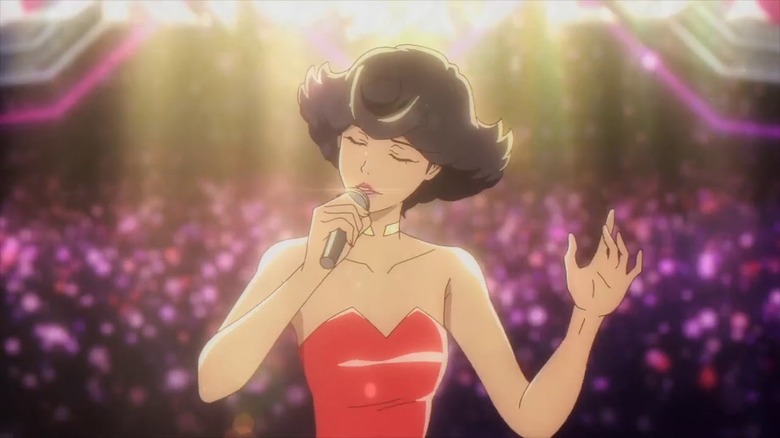
Sure, Angela still rises to superstardom thanks to her AI-made songs, while Carole and Tuesday struggle financially the entire anime, but as the opening narration of every episode tells us, it is a song made by the two girls that changes the world.
Shinichirō Watanabe may get a bit too simplistic in the way he portrays politics and social issues, but there is no denying how effective "Carole & Tuesday" is at what it does. This is because the second half of the show ramps up other timely commentaries, like the rise of right-wing fear-mongering and an anti-immigration movement on Mars — complete with Martian ICE. Meanwhile, time and time again, the anime shows the power of music to transcend barriers and bring catharsis, and to connect with people in powerful ways, like a performance at Mars' SXSW (really) inspiring an aging singer to return to her non-AI-driven music roots.
The show culminates in a phenomenal final performance of a protest song done in support of Earthian immigrants on Mars, a performance that supposedly inspires a wave of change all throughout the red planet by bringing empathy and understanding. Sure, it is cheesy and easy, but it is the perfect summary of Watanabe's ideas in "Carole & Tuesday" — that art made by human souls has something intrinsically special that can never be replicated by any machine, any corporation, or any marketing department. Not all problems can be solved by song, but art definitely has the potential to change minds, and at times even the world. With AI, however, we lose that potential.
Read this next: Anime Shows Like Cowboy Bebop That Are Worth Your Time
The post The Creator Of Cowboy Bebop Made a Netflix Anime Predicting The Dangers Of A.I. Art appeared first on /Film.
Product Security: Harnessing the Collective Experience and Collaborative Tools in DevSecOps
How the New I Bond Rate Compares to CDs and Savings Accounts - CNET
Embrace the Passwordless Future of Passkeys
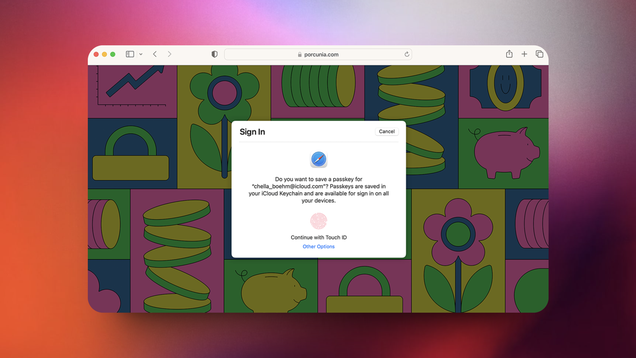
Digital passwords have existed since the 1960s, and we haven’t come up with a better option...until now. An tech industry-wide group called the FIDO Alliance aims to get rid of them, and for good reason: Passwords are easy to hack, and difficult to remember. The smarter method, they argue, is to scrap troublesome…
Why Anakin Killed The Younglings In Star Wars: Revenge Of The Sith
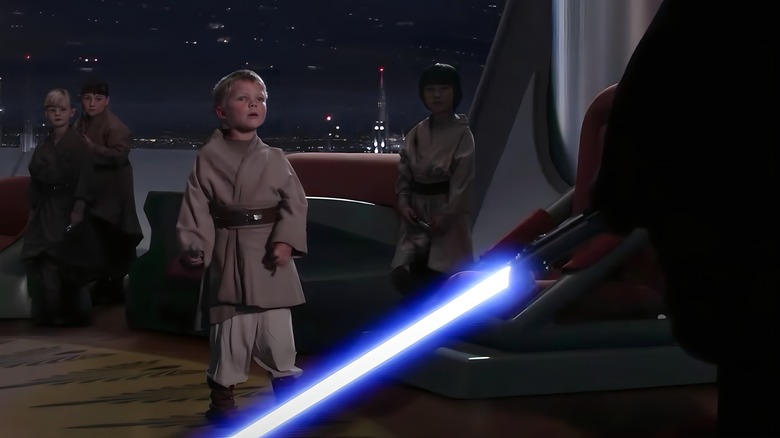
Anakin Skywalker murdering Younglings in George Lucas's "Star Wars: Episode III -- Revenge of the Sith" might be both one of the most brutal and darkly ridiculous "Star Wars" moments ever ... from a certain point of view. (*adapts Darth Vader voice* All too easy.)
Upon arriving at the eleventh hour to assist Darth Sidious/Palpatine in defeating Mace Windu (sending Samuel L. Jackson's purple lightsaber-wielding Jedi out like the badass he is), Anakin pledges his loyalty to the Sith lord. Our "Chosen One" then proceeds to march an army of Clone Troopers over to the Jedi Temple on Coruscant. Not long after, we cut to Anakin cornering a group of Younglings in the Jedi Council's chambers. Cue Anakin extending his lightsaber as he prepares to mow down a room of wide-eyed and terrified children.
In context, of course, this scene is extremely effective in showing just how far gone Anakin is from that young man who once cried after killing a bunch of Tusken Raiders for kidnapping his mother and letting her die. (Not that this was, in any way, a justified course of action.) Whatever part of him was still capable of feeling remorse has been banished to the deepest recesses of his mind. Once you've crossed the line into executing children on your boss' orders, you've truly committed yourself to the whole bad guy thing.
What makes this moment borderline comical is that, right before it happens, we see Clone Troopers battling fully-grown Jedi in an intense firefight spread throughout the Temple. Is the implication that Anakin beelined for the closest potential Younglings hiding spot, leaving the clones to do all the heavy lifting? And why bother killing a bunch of kids barely strong enough to pick up a lightsaber in the first place? The film doesn't really offer an explanation, but we may find the answers elsewhere.
Look To The Sacred Texts
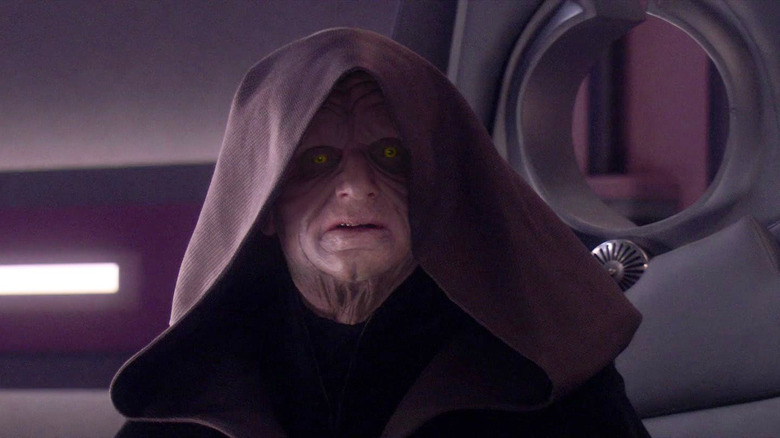
"Star Wars" movie novelizations have always been an invaluable resource for anyone seeking greater insight into the films' plots and the motivations of their characters. Sure, we can quibble over whether they're strictly canonical or not, but the general rule of thumb is that as long as they don't directly contradict anything in the movies, they're fair game.
In the case of "Revenge of the Sith," there's a key difference between what Palpatine tells Anakin after dubbing him Darth Vader in the film and what he says to Anakin in the official novelization by Matthew Stover. In the movie, Palpatine states:
"The Jedi are relentless. If they are not all destroyed it will be civil war without end. First, I want you to go to the Jedi Temple. We will catch them off-balance. Do what must be done, Lord Vader. Do not hesitate. Show no mercy. Only then will you be strong enough with the dark side to save Padmé."
In Stover's novel, however, Palpatine's command leaves even less wiggle room when it comes to his full meaning:
"The Jedi are relentless. If they are not destroyed to the last being, there will be civil war without end. To sterilize the Jedi Temple will be your first task. Do what must be done, Lord Vader. Do not hesitate. Show no mercy. Leave no living creature behind. Only then will you be strong enough with the dark side to save Padmé."
Terms like "sterilize" directly evoke the fascist regime of Nazi Germany and the Holocaust. Moreover, Palpatine demanding that Anakin "leave no living creature behind" makes it horribly clear: the Sith lord was calling for nothing less than the complete and utter eradication of the Jedi Order and its members, regardless of their age or training.
Revisiting Order 66
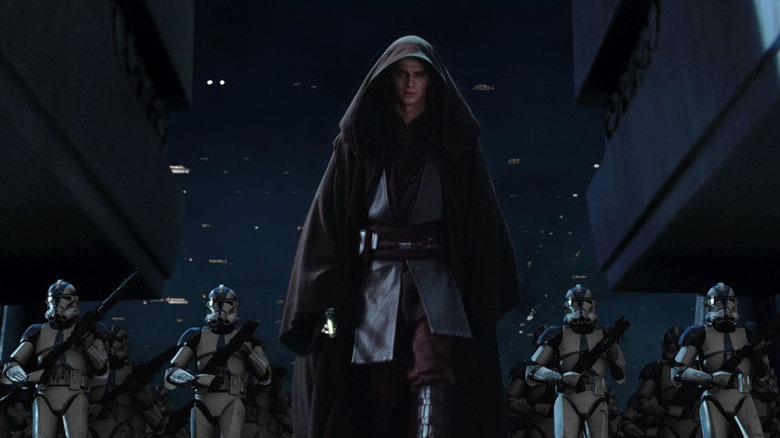
One of the best things about the "Star Wars" television series are their capacity to do things the prequel films never could, like depicting paradigm-shifting events through the eyes of different characters. In "The Mandalorian," we see Order 66 from Din Grogu's perspective (yes, we're using his new name now, get used to it), revealing how he escaped Anakin's assault on the Jedi Temple. The "Obi-Wan Kenobi" series further reveals that Inquisitor Reva was once a Youngling who survived the Temple attack, making her one of the few individuals aware that Anakin and Vader are the same person.
Those "Obi-Wan Kenobi" flashbacks to Order 66 also serve the purpose of clarifying that yes, Anakin fought side-by-side with the clones as they steamrolled through the Temple on his way to the Jedi Council's chambers. The "Revenge of the Sith" novelization makes it equally explicit that Anakin killed many of the Temple's Jedi himself, starting with the Gate Master Jurokk. A description of their encounter reads as follows:
"Anakin," he said slowly, "what's going on? Something's happened. Something horrible. How bad is it—?"
The last thing Jurokk felt was the emitter of a lightsaber against the soft flesh beneath his jaw; the last thing he heard, as blue plasma chewed upward through his head and burst from the top of his skull and burned away his life, was Anakin Skywalker's melancholy reply.
"You have no idea ..."
Obviously, we're meant to intuit what Anakin does prior to the infamous Younglings scene in "Revenge of the Sith." Still, as this passage illustrates, simply showing the start of Anakin's murderous rampage makes his eventual killing of the Younglings impactful in a way that the movie, with its curious editing of the events leading up to this moment, does not.
The Downfall Of Anakin Skywalker
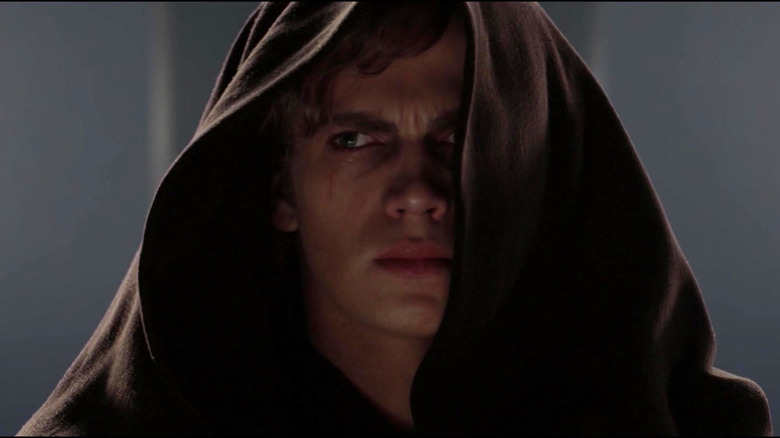
Nobody goes from a cheerful kid who loves podracing to committing genocide overnight, and Anakin Skywalker is no different. The "Star Wars" prequels, however, skip over a lot of important steps while charting Anakin's downfall, leaving it once again to their novelizations and the "Star Wars" TV shows to fill in the blanks.
The animated "Clone Wars" series, in particular, goes a long way in showing how Anakin earned his reputation as a cunning warrior. At the same time, it uses a far subtler hand than the prequels when it comes to exploring the darkness looming beneath his noble exterior. There may be no better example of this than in the episode where Anakin ends a standoff between Obi-Wan, the Mandalorian Duchess Satine Kryze, and the treacherous Kalevalan prince Tal Merrik by sneaking up and stabbing Tal in the back:
The way Anakin casually shrugs off his actions ("What? He was gonna blow up the ship."), combined with composer Kevin Kiner integrating a few notes from Darth Vader's iconic theme, foreshadows the slippery slope Anakin was on well before he started butchering children. It certainly applies a much finer touch than his meme-spawning, "Actually, I'm kind of cool with dictatorships" comments from "Attack of the Clones."
That's not to suggest the prequels are devoid of understated storytelling. Arguably the best moment in "Revenge of the Sith" -- and maybe even the entire prequel trilogy -- is the scene where Anakin silently contemplates whether or not to align himself with Palpatine. But for the most part, those movies tend to favor something of a sledgehammer approach. And nothing gets your point across quite like showing your story's supposed hero (reluctantly but willingly) pulling out their weapon to massacre a bunch of kids.
Read this next: The Most Brutal Moments In The Star Wars Franchise, Ranked
The post Why Anakin Killed The Younglings In Star Wars: Revenge Of The Sith appeared first on /Film.
The government is very hackable, and they have your data
Data breaches and security failures happen everyday. There’s little we can do about that if we want to participate in modern society, except maybe switch out the companies we interact with for their competitors if we presume one to be more secure. There’s one service that we don’t have a choice on whether to interact with, no matter how high profile its security incidents become: the federal government.
A breach of the Office of Personnel Management announced in 2015 it had leaked background investigation records, impacting 21.5 million individuals, according to the agency. The highly publicized Solarwinds hack discovered in 2020 exposed government and business records to Russian insiders. Earlier this year, the US Marshals Service division of the Department of Justice became a target, when hackers stole personal information about investigation targets, personnel and more.
The attacks were targeted, usually seeking out some type of sensitive state information. But we all have sensitive information stored throughout federal agencies like our social security numbers or home addresses. Probably even more information is at stake if you utilize federal services like Medicare, student loans or SNAP benefits. We have no choice but to give the federal government access to our personal information in exchange for certain services, unless you’re reading this while living off grid.
“If we want to live in the information age, and we're using some of these systems, we are inherently giving up control,” Kevin Cleary, clinical assistant professor of management science and systems at University at Buffalo, told Engadget. “You have to trust that agency has put forward all the best controls and practices.”
In response, the federal government has developed agencies like the Cybersecurity and Infrastructure Security Agency to lead better security initiatives across departments. In part, this is intended to help you feel a little bit better about storing your data within federal servers by setting higher standards for how it safeguards your data. According to Michael Duffy, associate director of the cybersecurity division at CISA, since the agency’s establishment in 2018, it’s spearheaded the most progress he’s seen in his federal cybersecurity career.
So, things are improving, and you can probably trust the federal government to keep your data safe in the same way you trust the companies you interact with everyday. What makes the government so different, though, is that it’s a high profile target. Adversarial countries want in on state secrets while, at the same time, it’s hard to prioritize spending on security measures. Getting tax-payer funds to fill a pothole on your local highway is hard enough when the damage is tangible and obvious, while security is hard to quantify the benefits of until an attack occurs. In other words, the value of security investments aren’t proven until it’s already too late.
This has gotten better. Security investments in the federal government largely trend upwards. Still, it’s not enough. “Sometimes their budgets don't allow them to take every step or to everything that they would like to do, because you just simply don't have the money,” Marisol Cruz Cain, director of information technology and cybersecurity at GAO, said.
But the reason why the federal government may appear less secure is because of its obligation for transparency. There’s a responsibility to share lessons learned after an incident, and make sure citizens know what happened. That’s actually a big part of CISA’s job. “We are really looking at ways that we are making it more acceptable to raise the hand and say this is the way that we were attacked or an incident occurred,” Duffy said.
The government also interacts with a ton of outside businesses. So, say a government contractor experiences a breach or security incident, that means that data held in federal tech could be exposed. This opens up a slew of new attack vectors, and possibilities for malpractice.
You can actually see how secure certain agencies are thanks to the Government Accountability Office (GAO) and legislation like the Federal Information Technology Acquisition Reform Act. The latter documents tech modernization efforts across major agencies, including cyber readiness. GAO, for its part, audits cybersecurity efforts and develops privacy impact assessments that are publicly available descriptions about what information the agency collects, how they use it and more.
But with all these audits come a relatively bleak conclusion. Agencies aren’t evaluating their policies and procedures to make sure that high profile incidents don’t happen on a regular basis, Cruz Cain said. Your information will be on those servers whether you like it or not.
This article originally appeared on Engadget at https://www.engadget.com/the-government-is-very-hackable-and-they-have-your-data-163034576.html?src=rssSaints Row The Heist & The Hazardous Released
The SBOM Bombshell
SBOMs can be used for managing risk and determining vulnerability impact, but it’s very hard to build holistic risk models when the data is not standardized across multiple platforms.
The post The SBOM Bombshell appeared first on SecurityWeek.
I Learned To Hold My Breath Like The Actors In Avatar: The Way Of Water
"Avatar: The Way of Water" is out on digital. Perhaps you've heard of it? The long-awaited sequel to 2009's "Avatar" by James Cameron made almost $2.5 billion at the box office. It continues the story of the Sully family as they hide out from the humans of the RDA, who have returned to Pandora after years away. The family finds sanctuary with the Metkayina, a water-based group of Na'vi who have developed physical adaptations for swimming.
You may have heard the stories on-set of the actors holding their breath underwater, aka freediving, for a very long time. This includes Kate Winslet — who played Ronal, one of the Metkayina — holding her breath for a whopping seven minutes and 15 seconds. In fact, all the swimming scenes were done "wet for wet," meaning that they were all shot underwater. That meant the actors had to learn to swim under the surface for a long time without scuba gear, which would cause too many bubbles. Those bubbles read on a camera, similar to the motion capture dots that the VFX artists need to render the final shots.
There is a method to this breath-holding freediving technique, and it's fascinating. I recently attended an event at a local Los Angeles swimming pool to celebrate the digital release of the film, and Kirk Krack, Marine Unit and consultant on "Avatar: The Way of Water," taught us the same techniques that the actors learned. We started on land, then moved into a pool.
Do not try any of this at home. We were being supervised, and there were a lot of safety precautions, including not doing this alone. If you want to attempt freediving and breath holds, please check in with Krack's company, Performance Freediving Academy to see where to get trained.
Overcoming Your Brain
Kirk Krack created the first Breath-Hold Surf Survival (BHSS) course. He worked with Tom Cruise and Rebecca Ferguson on underwater techniques for "Mission: Impossible — Rogue Nation," with Margot Robbie and her stunt double for "Suicide Squad, and even magician David Blaine. He also brought along his teen daughter Kaila (right under the monitor screen in the picture above), who doubled for Trinity Jo-Li Bliss, the actor who played Tuk, Jake (Sam Worthington) and Neytiri's (Zoe Saldaña) youngest daughter in the film.
Krack was on set every day and in most of the underwater scenes for safety, though you can't see him in the final shots. He wasn't wearing motion capture dots but was on set to aid the actors he trained. He was assisted at the event I attended by Jurgen Heitmann and Andy Walshe from The Liminal Collective, a company that works to expand the limits of human potential and athletic performance.
He began with a presentation about how it all works, and the idea of overcoming primal fears like drowning and the body's response to lack of oxygen. We were told that the world record for breath-holding is over 11 minutes and that Krack himself had done it for seven. We learned about how the body responds to carbon dioxide building up in the body and how it creates carbonic acid. Our brains notice this acid and tell us to breathe to move it through. Nothing terrible will happen if we hold our breath for that long (with all safety precautions in place, and again, do not try this without instruction). What we were learning is how to overcome the body's normal signals. Let me tell you, it wasn't easy, but it's wild to try.
Breathing ... So You Don't Have To Breathe
We began by doing a series of sets of something called a "breathe up." You breathe into your diaphragm, then into your lower lungs and ribs. You breathe in, hold for a count of two, breathe out slowly for 10 seconds with an audible sound, then hold for two. You do this for a while, depending on how long your ultimate breath-hold goal is for. We did it for a minute for some, and two minutes for others. Then we did a "purge," which was a deep breath into the diaphragm, then the lower lungs and ribs, then we top it up to the point that your shoulders rise up. Then you release it for four pushed exhales. You breathe normally for 10 seconds, then take a deep inhale and begin your breath-hold. All of this is to manipulate your system into being calm and relaxed enough not to breathe for an extended period.
We did a one-minute hold, then a two-minute, and then a two-and-a-half-minute hold while lying on yoga mats on the ground. As we held our breath, Krack took us through relaxation techniques, inviting us to relax individual body parts as well as the mind.
I was pretty good at it on the yoga mat! Oddly enough, the shorter holds cause your body to give you more signs to breathe. My body twitched in the one-minute hold, but not in the longer ones. In the longest hold, it felt like I could have gone on with little problem. Of course, that didn't mean anything to my brain in the water, and there are several reasons for that.
Water Is Not The Same
For the next phase of the class, we partnered up and put on our wetsuits. Look, I am a baby about the cold. I have something called Raynaud's Phenomenon, which basically means I have crappy circulation. I get cold very easily, and my fingers and toes just go white and numb when it's below 68 degrees. That's all to say that the wetsuit didn't keep me warm.
My partner went first as we stood in the pool. We were instructed in buddy safety, which includes getting full signals from the other person from underwater, holding your hand in front of their face so they don't bang their face on the side of the pool, and doing the counts for them.
My partner's final hold was cut short because of the cold temperature, leading Andy Walshe — who was behind us in the pool — to tell us that once the shivering starts, your body's need for oxygen goes up 500 percent! When I began my own attempt, I was already shivering like mad. I was able to hold for one-and-a-half minutes underwater, but it wasn't anything like it was on land. Put me on a yoga mat, and I can relax the rest of my body, but in the water, shivering and watching, it's incredibly difficult.
It didn't occur to me until I returned from the event that I hadn't been swimming with my head underwater since I had a near-death experience which led to two surgeries. This is a primal fear I didn't have before, that sort of kicked in when I had to let go and float without breathing.
Taking It Into The Dry World
One thing Krack told us is that the segmented breathing technique that involved breathing into the diaphragm and the lower ribs, holding for two, exhaling for ten seconds, then holding for two again, was beneficial to attempt every day. Now, when I say this, I don't mean in the water. (Yes, that was another safety warning.) He spoke about doing this during the day twenty times, doing some in the morning and the evening split into sets of ten, as it calms the nervous system and helps you relax. Setting aside time to calm down and relax is something I'm familiar with since I meditate daily. I can speak to its benefits, which include reduced anxiety and better technique when I exercise.
I'm also a marathon runner, and even though I do meditate, doing something like this where you hold your breath for a long time was really strange for my body. I spend a lot of time running long distances, where the big thing is breathing and not holding your breath (the same goes for my gym training).
To be completely truthful, I was a little frustrated with myself for not being able to hold my breath as long underwater. That led me to attempt it again at home. (I was practicing on land, and there was someone with me. Safety warning again, friends.) I was able to get my breath hold up to three-and-a-half minutes. This was on land, not in the water, though, which I would love to attempt again ... with an instructor. I also think I was able to do it because I wasn't in the water, floating with nothing to hold onto, because I didn't feel as helpless (which reminded me of the surgeries).
Respect For The Actors Who Did This
The way the human body works is fascinating to me. The idea that we can manipulate our own systems to do things we wouldn't normally do and override signals that we don't need at the moment is crazy. I mean, I was familiar with how breath can change moods and feelings from both meditation and running (which is the one thing I can always count on to calm me down), but this is a whole new level of it.
One thing Krack mentioned several times was that the techniques becoming almost second nature after extensive training allowed the actors to stop thinking about them and focus on acting. Some of them, he said, were so into the whole thing so much that they didn't want to stop. He said that Sigourney Weaver, who played Kiri, would be over at the tank even when she wasn't shooting. Bailey Bass, who played Tsireya (Reya), started out by not holding her breath for long and being at the bottom of the pack. After a while, she ended up being able to hold her breath for a long time and wanted to stay in the tank as well.
Having attempted this, I have an enormous amount of respect, not just for the actors who learned the techniques, but for Krack, who makes this seem very easy and comfortable. I may admit to having a few nightmares the day before, but despite my failed attempt to become a Metkayina, I'm pretty proud of holding my breath on land for three-and-a-half minutes. I'm definitely going to look for more instruction, and I'm going to try the breathe-up technique each day to get better at this.
"Avatar: The Way of Water" is out on digital right now.
Read this next: The 15 Most Influential VFX Artists In Movie History
The post I Learned To Hold My Breath Like The Actors In Avatar: The Way Of Water appeared first on /Film.
Doom 2 RPG has been unofficially ported to PC

During the noughties, developer ID Software adapted some of their iconic shooters into curious mobile spin-offs with Doom RPG, Doom 2 RPG, and Wolfenstein RPG. These mixed Doom with old-school dungeon-crawler design, letting you shoot monsters at a considerably slower pace. Over a decade after their initial releases, developer GEC.inc unofficially ported Doom RPG onto PCs and now the team is back with a port for the sequel.
Outer Wilds fan makes a functional version of the alien translator

The enigmatic system of Outer Wilds is packed with scary things you wouldn’t want running around in real life: spine-tingling cosmic anglerfish, endless time loops, and a bunch of existential dread. (Oh, wait a minute.) Although, the spacefaring adventure has at least one tool that would be handy in everyday situations: the translator. One Redditor has thankfully recreated a functional version of the translator and this clip shows the delightfully faithful tool.
Your Brick House Needs Weep Hole Covers

If you learn anything after buying a house, it’s this: Water is your enemy. Every day, in a surprisingly wide variety of ways, water is infiltrating your house and trying to erode, rust, and wash away everything inside it, including you. That’s why the folks who built your house have taken steps to anticipate and deal…
Nintendo, Ticked by Zelda Leaks, Does a DMCA Run on Switch Emulation Tools
Read more of this story at Slashdot.
Microsoft Could Cram More Ads Into Windows 11 - This Time in the Settings App
Read more of this story at Slashdot.
6 Reasons Why Supply Chain Attacks Are on the Rise
As supply chain attacks become an increasingly common type of cyberattack, cybersecurity professionals are pressured to come up with new, more powerful solutions to combat this ongoing threat to individuals and organizations across the world.
Look Upon The Unsettlingly Realistic Chris Pratt Dummy From Guardians Of The Galaxy Vol. 3 And Despair

It seems like we've all been complaining about the overuse of CGI for so long that we might just be witnessing the teeniest tiniest shift in how Hollywood approaches visual effects. The clickers in "The Last of Us" were just a little too practical for star Pedro Pascal, and the new "Dungeons and Dragons" movie was full of practical creatures built by the team behind Grogu. Then there was that terrifying rat queen in Guillermo Del Toro's "Cabinet Of Curiosities," which was an actual functioning puppet. And now, with "Guardians of the Galaxy Vol. 3" finally hitting theaters, we have the impressive abomination that is the ultra-realistic Chris Pratt doll.
Built by the prolific Legacy Effects, who've worked on everything from "Avatar: The Way of Water" to "The Revenant," the life-sized prop was constructed to allow Nebula actor Karen Gillan to look as though she was carrying Star-Lord with ease in the movie — a shot of which appeared in the "Vol. 3" trailer. The doll itself gained attention when Gillan revealed its existence during the film's press tour, and Pom Klementieff, who plays Mantis in the "Guardians" films, also spoke about how "incredibly realistic" the ungodly creation was, adding that she "could barely look at it because it looked like [Pratt] was actually dead. Really dead."
Now we've gotten a much better look at the thing, thanks to director James Gunn's social media addiction. The new co-head of DC Studios posted three behind-the-scenes videos of the Chris Pratt doll to Instagram, which provide a real insight into just how realistic the creation was -- and yes, it's just as terrifying as they made it sound.
This Thing Is Next-Level Disturbing ... And Also Kinda Cool

The videos show Karen Gillan and Chris Pratt seeing the doll for the first time and seeming genuinely taken aback by just how realistic it is. They also reveal that the fake Pratt weighed just 35 pounds, allowing Gillan to carry it with relative ease. And beside the insanely detailed facial design, which features stubble and freckles, perhaps the most unsettling part of the whole thing is the fact that the doll is able to "breathe." That, and the troubling way the thing gently bounces as Gillan walks towards the camera, mimicking the lifeless weight of a deceased Pratt with alarming accuracy. Check out the videos below.
These videos of the Chris Pratt doll (you can watch them with sound over on TikTok) are more than just a terrifying glimpse into a dim netherworld where hope itself has perished. While we've all been preoccupied with conversations about how digital effects have progressed, and being all "sub-surface scattering this" and "ray tracing that," practical effects artists have been stepping their game up, too. The Pratt doll really does look perfectly lifelike, demonstrating just how far we've come since those jarring shots of a fake Arnie head in "The Terminator."
It's also nice to see Gunn and company making use of practical effects in a Marvel Cinematic Universe movie — especially one that's otherwise laden with digital VFX. Let's hope we see more of this in the future (but in a less soul-shattering form), and maybe we can avoid seeing the god-awful CGI of a film like "Ant-Man and the Wasp: Quantumania" ever again.
Read this next: MCU Superpowers That Don't Quite Make Sense
The post Look Upon the Unsettlingly Realistic Chris Pratt Dummy from Guardians of the Galaxy Vol. 3 and Despair appeared first on /Film.
Starlink Users Love Their Internet Twice As Much Despite 68% Lower Speeds

Users of SpaceX's Starlink satellite Internet service love their connections despite experiencing lower download speeds than fixed broadband in metropolitan and nonmetropolitan areas in the U.S. This interesting relation comes courtesy of the latest survey from the maker of Speetest, Ookla. Ookla ran a Net Promoter Score (NPS) analysis of Starlink users and discovered a vast difference between the rating received by SpaceX's service and broadband internet providers.
The difference was the sharpest for metropolitan Starlink users, even though their median download speeds were significantly lower than the broadband users. At the same time, Ookla's overall analysis for internet speed data in America showed that median download speeds continued to drop annually but, in a breath of fresh air, increased quarter over quarter.
Starlink User Download Speeds Increase By 13 Mbps Between December 2022 and March 2023 Shows Data
Starting with the download speeds, the latest data from Ookla shows that median download speeds in the U.S. dropped by 24 Mbps annually in the first quarter. However, the speeds did increase by 13 Mbps in the first quarter of 2023 compared to the fourth quarter of 2022. However, users in Mexico were much worse off, as their median download speeds dropped by a stunning 100 Mbps annually, with those in Canada experiencing the smallest drop of 3 Mbps.
These details, though, are not the most interesting ones of the survey. Ookla's NPS analysis of Starlink shows that even though median speeds for the satellite internet service are lower than broadband internet in both metropolitan and nonmetropolitan areas, Starlink users are far more likely to recommend the service to others.
The NPS rating measures the difference between the 'Promoters' and 'Detractors' of the service, and due to this, a positive score indicates a higher percentage of promoters. In contrast, a negative score indicates vice versa.

The results show that metropolitan and nonmetropolitan Starlink users had NPS scores of 31.94 and 42.21, respectively. This shows that a more significant proportion would recommend the service to others, and the scores become even more important when we look at the rather dismal performance of broadband users. Ookla reveals that broadband users in U.S. metropolitan and nonmetropolitan areas had NPS scores of -23.62 and -21.27, showing that instead of recommending the service, they were more likely to ask others to refrain from getting a connection.
Despite an equally large difference in the median download speeds in the metro and nonmetro areas, these massive differences exist. Metro Starlink users had a median download speed of 65.29 Mbps, and nonmetro users clocked in at 72.18 Mbps. In percentage terms, metropolitan median speeds for Starlink users were 68% lower than broadband users, yet, their NPS scores were twice as high. In other words, despite having half the download speeds, Starlink users are twice as likely to recommend the service in metro areas.
Further analysis of the data shows that download speeds are not the sole influencer of user opinion. This is because in the nonmetro areas, broadband users had a median download speed of 100.41 Mbps, which is not significantly higher than Starlink's speed. However, despite 30% lower speeds, Starlink nonmetro users were three times as likely to recommend the service to users.
As to the future of Starlink, SpaceX's plans to launch next generation satellites appear to be constrained for now, as only a couple of such launches have taken so far. However, the firm is upgrading its user terminals and aims to have Starship operational soon to launch the upgrades satellites for service improvement.
NVK Open-Source Vulkan Driver Development Progressing On Nearly Decade Old GTX 980M
Why Karen Gillan Thinks Nebula Is More 'Evolved' In Guardians Of The Galaxy 3
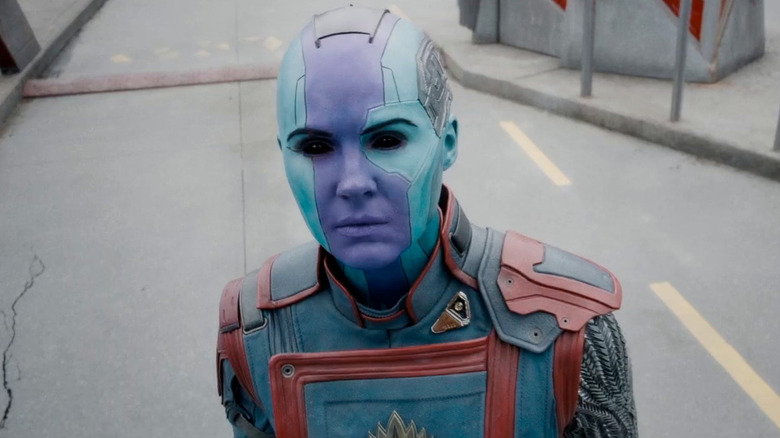
Karen Gillan's Nebula may have started as a full-on villain, but since her first appearance in "Guardians of the Galaxy" back in 2014, she's gone on to have one of the most satisfying character arcs in the whole Marvel Cinematic Universe. She's now an integral part of the Guardians family in "Guardians of the Galaxy Vol. 3," James Gunn's final installment in his trilogy before he leaves Marvel behind to tackle the new slate of DC movies as head of DC Studios.
Gunn departs having crafted three of the best MCU movies, even though the threequel was a bit of a rushed, uneven, yet sporadically emotional finale. At the very least, "Vol. 3" brought us our first ever f-bomb in MCU history. And it's none other than Nebula herself who's on the receiving end of Peter Quill (Chris Pratt)'s cursing in the scene that has everybody talking about this hugely consequential moment in film history. But what might be even more consequential is the fact that Nebula has now become almost the opposite of what she started as. And according to Gillan, the alien mercenary has now evolved to a point where she's almost unrecognizable as her former self.
Is Nebula The New Gamora?
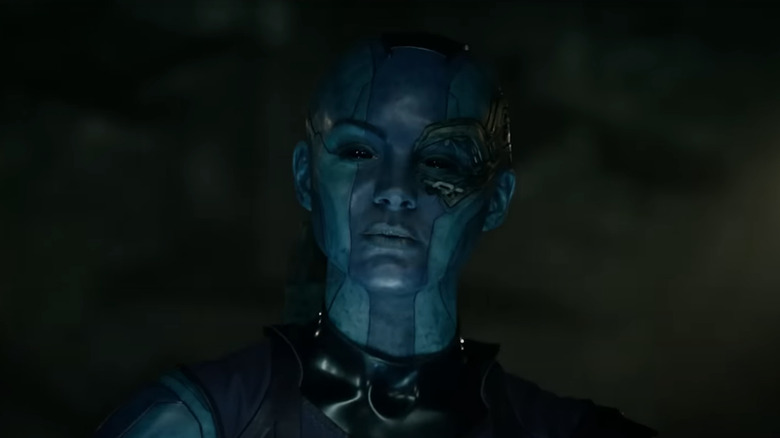
Nebula is one of the most interesting "Guardians of the Galaxy" characters. She grew up being forced by her adoptive father, Thanos, to battle her own sister Gamora — herself an erstwhile member of the Guardians who is resurrected for "Vol. 3" using some deus ex machina plot device. As she puts it in the first "Guardians" movie:
"As a child, my father would have Gamora and me battle one another in training. Every time my sister prevailed, my father would replace a piece of me with machinery. But she won again and again, never once refraining."
It's a pretty grim origin, but not one that defines her story, as she eventually finds the family she's looking for in the Guardians and reconciles with Gamora in "Guardians of the Galaxy Vol. 2." Then, while helping the Avengers take down Thanos in "Avengers: Endgame," she can be seen killing an alternate timeline version of her old self, symbolically completing her transformation from unfeeling assassin to compassionate hero. Oh, and she even got Rocket a pretty special Christmas present in "The Guardians of the Galaxy Holiday Special."
Now, with the existing Gamora in "Vol. 3" being an older version of herself from a different timeline, Nebula is arguably the more emotionally evolved of the two sisters. All of which moved Karen Gillan to comment to The Wrap:
"It was kind of interesting to play because it's almost like [Gamora] and Nebula have switched places and now Nebula is the more evolved character with more compassion and Gamora is like the old Nebula [...] That was interesting to play around with, and Nebula in general is different this time around. She's got much more of a sense of humor."
Nebula And Gillan's Shared Journey
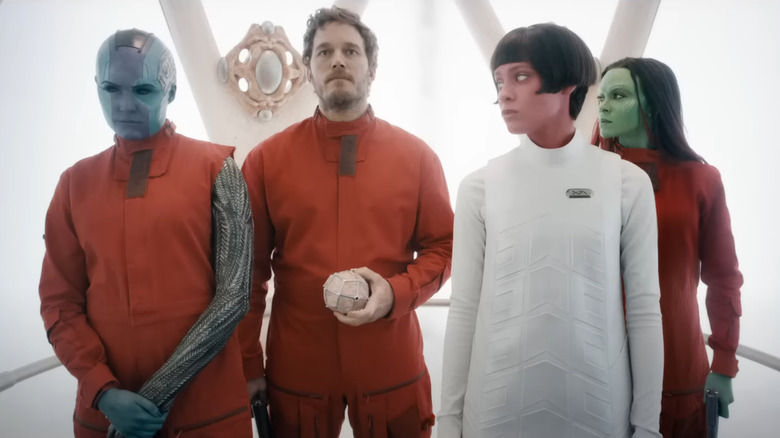
While the MCU continues to struggle in the age of superhero movie fatigue and its own obvious drop in quality, Nebula's more complex character development is a gift to us all. With "Guardians of the Galaxy Vol. 3" she completes her evolution just as Gunn departs to fight for the other side, making it a neat little way to wrap up this part of the character's story.
It's also nice that Nebula's evolution has coincided with Gunn's final "Guardians" movie because there's a real parallel between Gillan's experience and her character's own. Her journey as Nebula started with the actor struggling with some hugely uncomfortable makeup, prosthetics, and contact lenses, and ended with her considering the cast and crew "family." Gillan maintains that "Vol. 3" wouldn't have been the same without James Gunn, and told The Hollywood Reporter, "I think everybody was so excited to be back together. The feeling was giddy excitement. The whole family was back together and we truly do feel like a family."
Perhaps we'll get a Nebula movie or series in the near future, which might just help drag the MCU out of its mediocrity slump by highlighting some of the more developed, emotionally complex characters. Either that or Kevin Feige will hand over all writing duties to AI language models in the future, turning the human race to dust as we take in the latest godforsaken machine-made MCU dross, à la half the MCU population after The Snap. We just don't know.
Read this next: MCU Superpowers That Don't Quite Make Sense
The post Why Karen Gillan Thinks Nebula is More 'Evolved' in Guardians of the Galaxy 3 appeared first on /Film.
How Party Down Fundamentally Changed Adam Scott's Career Trajectory

Adam Scott never wanted to be anything other than an actor. He has been devoted to his craft ever since his days of appearing in plays in high school. His first notable professional gig was playing a strung-out deliverer of exposition in the not-at-all-remembered 1994 MTV series "Dead at 21," one of the most 1990s things ever. A few years later, Scott appeared in the final theatrically released "Hellraiser" movie, "Hellraiser: Bloodline" in which he played a sweaty, immortal French aristocrat. That same year, he played the unnamed helmsman of the U.S.S. Defiant in "Star Trek: First Contact." Incidentally, his "Star Trek" character has recently shown up in the video game "Star Trek: Timelines" where he was named Helsman Wyatt, presumably after Ben Wyatt, Scott's character on "Parks and Recreation."
Scott has since had a varied, textured career that included both high-profile jobs (Martin Scorsese's "The Aviator," the modern masterpiece "Torque") and low-profile nothings (this author may be one of 50 people to have seen the 2004 surfing film "Off the Lip"). He appeared in moody TV shows like "Wasteland" and "Party of Five," and the sex-heavy HBO show "Tell Me You Love Me." Always capable and devoted, Scott stood out in supporting roles for years. It wasn't until 2009 when he produced and starred in the Starz series "Party Down" that Scott's career experienced a massive upswing. "Party Down" was a series about put-upon unhappy caterers, and Scott played an apathetic would-be actor whose life hit a wall. He was sad and funny in equal measure.
In a recent interview with Variety, Scott — now the "Severance" and "Big Little Lies" star that will soon appear in the Spider-Man-adjacent film "Madame Web" — discussed how "Party Down" boosted his profile in real-time.
Things That Are Good
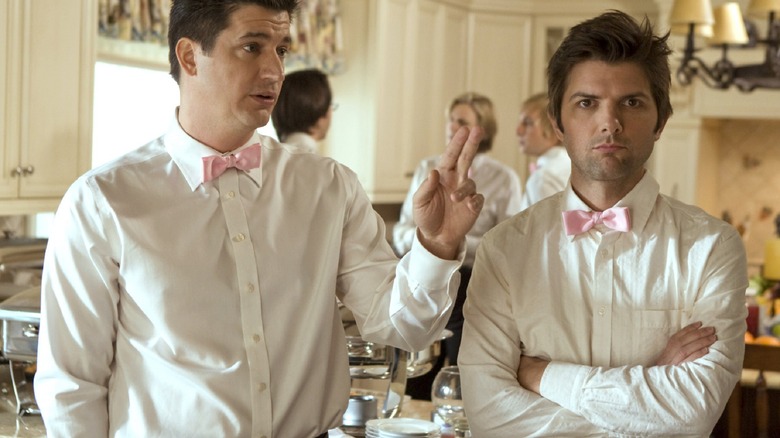
After many years of supporting roles and refining his craft, Scott, 50, says that "Party Down" finally offered him the kind of validation he always sought as a performer. Additionally, he was able to work with peers who respected him; "Party Down" was co-created by Paul Rudd, a close friend of Scott's from acting school. He says that a warm, edifying work experience made him realize that, well, more could be had in show business. In his words:
"I think that when you have an experience like that, you're sort of chasing that for the rest of time. [...] I hadn't had an experience like that before. It's rare. But it also sets a new standard for yourself. Not only 'this is what I should be doing,' but that 'this is what I deserve. I can contribute to something that's really good.' It's so easy to sell yourself short after being kind of swatted down for 15-or-so years in showbiz."
Scott certainly paid his dues. He seems to have taken a lot of work merely because it was work, and not because it was something he liked or felt was worthwhile. Not all actors have that luxury. It seems, though, that certain jobs can offer a great deal of personal and professional edification. After working through movies like "Monster-in-Law" and making the requisite actor's stop on "Law & Order," "Party Down" gave that to him. Scott said:
"[You] sort of start believing that you don't deserve quality things, that you should take whatever you can get. For me, ['Party Down'] certainly showed me that I should be seeking out things that make me feel good."
Party Down: The Return
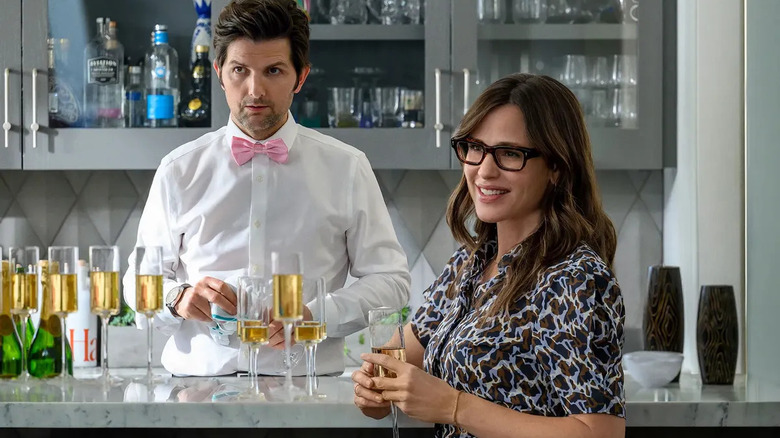
"Party Down" initially only lasted two seasons on Starz and was canceled in 2010. Scott would go on to appear in nearly 100 episodes of the hit sitcom "Park and Recreation" and begin cropping up in multiple high-end comedy shows like "Robot Chicken," "Drunk History," and "Comedy Bang! Bang!." He would replace Bradley Cooper in the Netflix revivals of "Wet Hot American Summer" (he also appeared in the original as Michael Ian Black's husband). Scott, perhaps to his own surprise, became firmly entrenched in the world of comedy.
Years later, "Party Down" became so beloved that it was revived on Hulu in 2023. Scott's character, Henry, was still beaten down by life and apathetic but was finding new hope in a romantic relationship with a character played by Jennifer Garner (previously, Henry had a will-they-won't-they relationship with a character played by Lizzy Caplan who does not appear in the revival until the final episode). It seems that "Party Down" continued to prove edifying.
It also came at a time when Scott appeared in the most acclaimed TV series of his career, the AppleTV+ sci-fi freakout "Severance." That series, produced by Scott and made by Ben Stiller, netted the actor multiple high-profile acting award nominations, including an Emmy. He lost to Lee Jung-jae from "Squid Game." As of this writing, however, a second season of "Severance" is currently in production, and it has been well-beloved by many. It seems that Adam Scott may eventually find himself an awards darling yet.
Read this next: The Best TV Episodes Of 2022, Ranked
The post How Party Down Fundamentally Changed Adam Scott's Career Trajectory appeared first on /Film.


